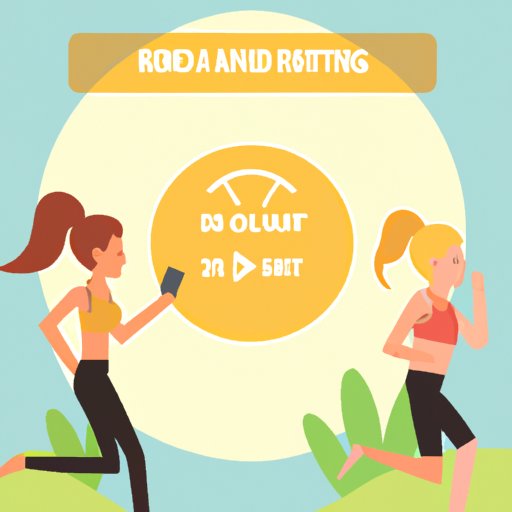Introduction: What is Cardio Fitness?
Cardiovascular fitness, or cardio fitness, is a type of physical activity that can help improve your overall health and wellness. It involves activities such as running, swimming, cycling, and other aerobic exercises. Cardio exercises are designed to increase your heart rate, which helps improve your cardiovascular system and boost your endurance.
Exploring the Benefits of Cardio Fitness
Cardio exercises offer many benefits for your physical and mental health. Here are some of the major benefits of incorporating cardio into your workout routine:
Improved Health and Wellness
Cardio exercises can help strengthen your heart and lungs, as well as improve your circulation. Additionally, regular cardio can help reduce your risk of developing chronic diseases, such as diabetes and heart disease. Regular cardio can also help you maintain a healthy weight and reduce stress levels.
Weight Loss
One of the main benefits of cardio is its ability to help with weight loss. Cardio exercise can help burn calories and fat, which can lead to a healthy weight. Additionally, the increased metabolism from cardio exercise can help you keep the weight off long-term.

Different Types of Cardio Exercises
There are many different types of cardio exercises that you can incorporate into your workout routine. Here are some of the most popular types of cardio:
Low-Impact Cardio
Low-impact cardio exercises are great for people who are just starting out with their fitness journey. Examples of low-impact cardio include walking, jogging, swimming, and using an elliptical machine. These exercises are gentler on the body and can be done at a lower intensity level.
High-Intensity Interval Training (HIIT)
HIIT is a type of cardio exercise that involves short bursts of intense activity followed by periods of rest. This type of exercise is great for burning calories and increasing your metabolism. Examples of HIIT include sprinting, burpees, jumping jacks, and mountain climbers.
Other Cardio Options
In addition to low-impact and HIIT exercises, there are many other types of cardio that you can incorporate into your workout routine. Examples include kickboxing, rowing, dancing, and even playing sports. No matter what type of exercise you choose, make sure it’s something that you enjoy so that you’ll stay motivated and stick with it.
The Science Behind Cardio Fitness
In order to understand the benefits of cardio exercise, it’s important to understand how it impacts your body. Here’s a look at the science behind cardio fitness:
How Cardio Impacts Your Heart Health
Regular cardio exercise can help strengthen your heart and improve its efficiency. When you exercise, your heart has to work harder to pump oxygen-rich blood throughout your body. Over time, this can help strengthen your heart and improve its functioning. Additionally, regular cardio can help lower your blood pressure and reduce your risk of heart disease.
The Role of Cardio in Burning Calories
When you exercise, your body has to use energy (calories) to fuel the movement. During cardio exercise, the muscles have to work harder to keep up with the increased heart rate. This means that you’re burning more calories than you would be if you weren’t doing any exercise at all. Additionally, regular cardio can help increase your metabolism, which can help you burn more calories even when you’re not exercising.

Incorporating Cardio Into Your Workout Routine
In order to get the most out of your cardio workouts, it’s important to create a balanced fitness plan that includes both cardio and strength training. Here are some tips for creating an effective workout routine:
Creating a Balanced Fitness Plan
It’s important to find a balance between cardio and strength training when creating your workout routine. Aim for three to five days of cardio per week and two to three days of strength training. Make sure to mix up the types of exercises you do so that you don’t get bored and give your body a chance to recover.
Scheduling Time for Cardio
You should aim to schedule at least 30 minutes of cardio exercise per day. If you’re just getting started, you may want to start with shorter sessions and gradually increase the amount of time you spend doing cardio each day. Additionally, try to mix up the types of exercises you do so that you don’t get bored.

Creating a Cardio Fitness Plan to Meet Your Goals
Once you’ve established a basic workout routine, you can start thinking about ways to meet your specific fitness goals. Here are some tips for creating a cardio fitness plan that works for you:
Setting Realistic Goals
Before you start setting goals, it’s important to think about what you want to achieve. Do you want to lose weight? Increase your stamina? Or just get in better shape? Once you’ve determined your goals, you can start creating a plan to reach them.
Making Adjustments as Needed
As you work towards your goals, it’s important to adjust your plan as needed. If you’re finding it difficult to stay motivated, try switching up your routine or adding new exercises. Additionally, make sure to listen to your body and take breaks when needed.
Conclusion
Cardio fitness is an important part of any workout routine. Regular cardio exercise can help improve your overall health and wellness, as well as help you reach your fitness goals. There are many different types of cardio exercises, so it’s important to find one that works for you. With a balanced fitness plan and realistic goals, you can start incorporating cardio into your routine and see the results for yourself.
(Note: Is this article not meeting your expectations? Do you have knowledge or insights to share? Unlock new opportunities and expand your reach by joining our authors team. Click Registration to join us and share your expertise with our readers.)
